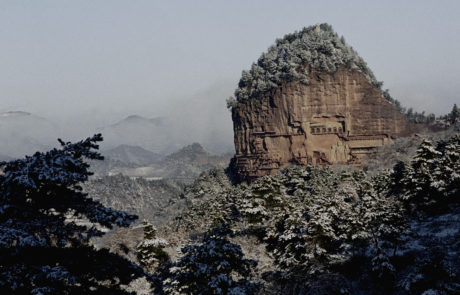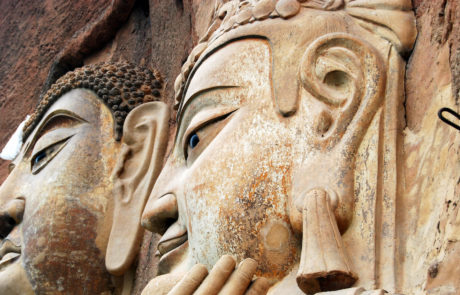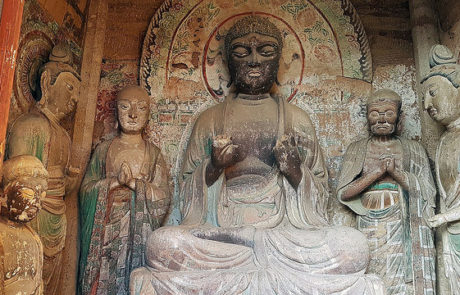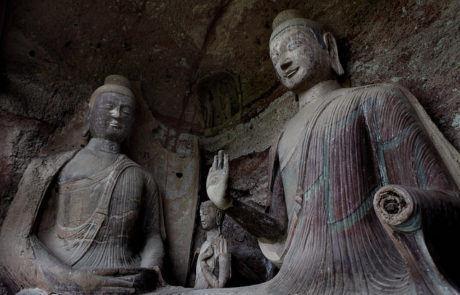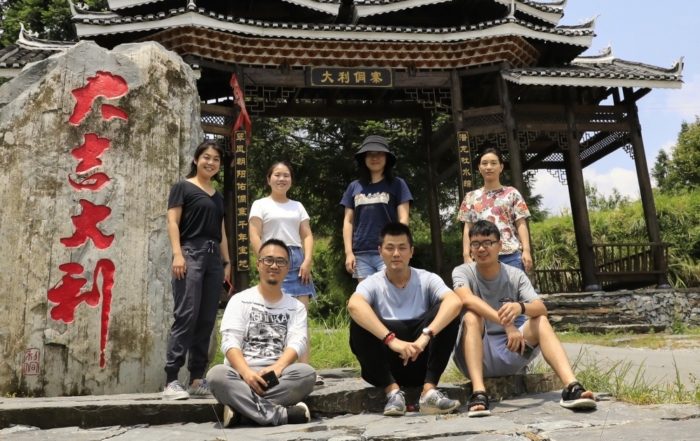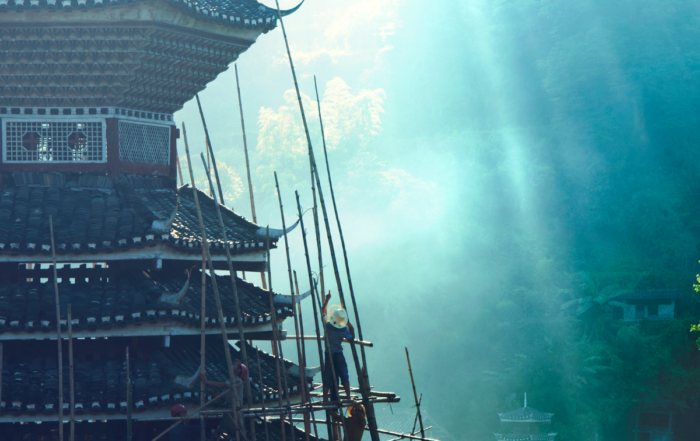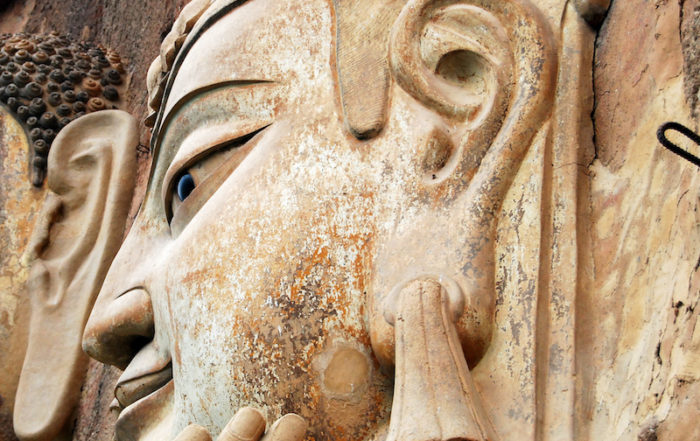Maijishan, China
Investing in local capacity building and management training to protect over 2,000 years of Buddhist history
The Northern Wei dynasty (386-581 CE) Buddha stands about forty feet tall, chiseled in golden sandstone along with two equally imposing bodhisattvas into a mountainside in the Qinling Mountains on China’s northwestern frontier. These are just three of more than 12,000 Buddhist statues at Maijishan, a singular complex of 221 grottoes honeycombed into this mountain face between the fifth to the 13th centuries CE.
These statues tell the story of the transmission of Indian Buddhism to China through Central Asia. The scale of this sacred trio remains no less awe-inspiring than it must have in 1222 when a stone stele memorialized the ten thousand pilgrims who prayed here. They too would have stared up at the Buddha’s massive, intricately decorated feet, their eyes traveling upward to the trio’s elegantly draped robes before squinting into the sunlight to admire these smooth, benevolent faces radiating serenity.
More than 1000 square meters of murals here depict the rise of Buddhism from the birth of Siddhartha, making Maijishan equal parts a historical record created over 1800 years and a three-dimensional tableau of overlapping artistic traditions at the intersection of Chinese, Tibetans, Indians, Mongols, Huns, Sogdians, and others who passed through this cultural crossroads along the Silk Road linking China with Central Asia.
Different from most cave temples that are linearly distributed, Maijishan takes full advantage of the spectacular natural landform. Twenty to eighty meters above ground, this intricate network of neatly arranged caves and cantilevered walkways line the steep cliff face. Inscribed within one of Maijishan’s sacred caves, sixth century poet Yü Hsin wrote: “It is as if one were to mount a carriage and pierce the mountain, carving out great niches.”
Owing to its strategic location, successive kingdoms fought over the ownership of Maijishan, with five different governments contesting control just between 385 and 446 AD. Today however, Maijishan lacks the international reputation of China’s three other major grottoes at Dunhuang, Longmen and Yungang, yet faces immense conservation and management challenges as domestic tourism rises drastically.
Partnering with the Maijishan Grottoes Art Research Institute, Global Heritage Fund is working to bring international experts in the preservation and management of Chinese heritage sites to enhance local capacities. Together we will develop an operational strategy around visitor management, site interpretation and build capacity for site staff through training. Recognizing the untapped potential around this UNESCO World Heritage Site, we will support development programs focused on heritage education, artisanal handicraft production and promotion, as well as community-based tourism and training.
Some images courtesy of Maijishan Grottoes Art Research Institute (MARI)


